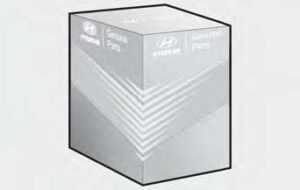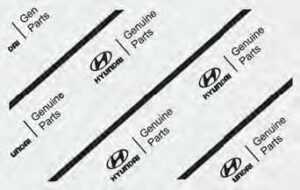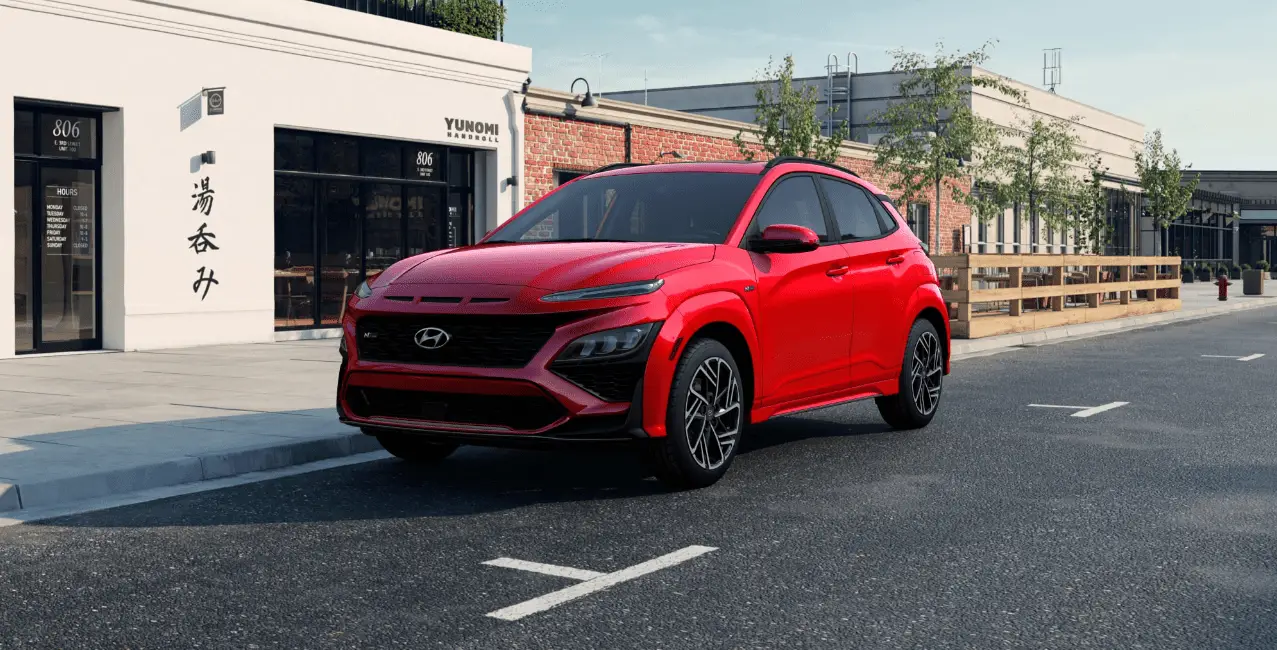Hyundai Kona 2023 Foreword
Hyundai’s dedication to environmentally friendly driving and legal compliance is demonstrated by the introduction of the California Perchlorate System and the 2023 Hyundai Elantra Hybrid Emission Control. This thorough guide explains how important it is for pollution control systems to function properly so that the car meets all applicable environmental regulations. It also discusses the unique California Perchlorate System, which is intended to handle goods containing perchlorate in a way that complies with California’s environmental laws. Hyundai’s provision of these insights embodies the brand’s commitment to sustainable driving and compliance with local environmental regulations by arming owners with the information to minimize their environmental impact while retaining optimal vehicle performance.
2023 Hyundai Elantra Specs, Price, Features, Milage (Brochure)
Foreword
Congratulations, and thank you for choosing HYUNDAI. We are pleased to welcome you to the growing number of discerning people who drive HYUNDAI. We are very proud of the advanced engineering and high-quality construction of each HYUNDAI we build. Your Owner’s Manual will introduce you to the features and operation of your new HYUNDAI. To become familiar with your new HYUNDAI, so that you can fully enjoy it, read this Owner’s Manual carefully before driving your new vehicle. This manual contains important safety information and instructions intended to familiarize you with your vehicle’s controls and safety features so you can safely operate your vehicle. This manual also contains information on maintenance designed to enhance the safe operation of the vehicle. It is recommended that all service and maintenance on your car be performed by an authorized HYUNDAI dealer. An authorized HYUNDAI dealer is prepared to provide high-quality service, maintenance, and any other assistance that may be required. This Owner’s Manual should be considered a permanent part of your vehicle and should be kept in the vehicle so you can refer to it at any time. The manual should stay with the vehicle if you sell it to provide the next owner with important operating, safety, and maintenance information.
HYUNDAI MOTOR AMERICA
Severe engine and transmission damage may result from the use of poor-quality fuels and lubricants that do not meet HYUNDAI specifications. You must always use high-quality fuels and lubricants that meet the specifications listed on Pages 2-13 in the Vehicle Specifications section of the Owner’s Manual. Copyright 2022 HYUNDAI Motor America. All rights reserved. No part of this publication may be reproduced, stored in any retrieval system, or transmitted in any form or by any means without the prior written permission of HYUNDAI Motor America.
GUIDE TO HYUNDAI GENUINE PARTS
What are HYUNDAI Genuine Parts?
HYUNDAI Genuine Parts are the same parts used by HYUNDAI Motor Company to manufacture vehicles. They are designed and tested for the optimum safety, performance, and reliability for our customers.

Why Hyundai Genuine Parts?
HYUNDAI Genuine Parts are engineered and built to meet rigid manufacturing requirements. Damage caused by using imitation, counterfeit, or used salvage parts is not covered under the HYUNDAI New Vehicle Limited Warranty or any other HYUNDAI warranty. In addition, any damage to or failure of HYUNDAI Genuine Parts caused by the installation or failure of an imitation, counterfeit, or used salvage part is not covered by any HYUNDAI Warranty.

How can you tell if you are purchasing HYUNDAI Genuine Parts?
Look for the HYUNDAI Genuine Parts Logo on the package (see below). HYUNDAI Genuine Parts exported to the U.S. are packaged with labels written only in English. HYUNDAI Genuine Parts are only sold through authorized HYUNDAI Dealerships.

HOW TO USE THIS MANUAL
We want to help you get the greatest possible driving pleasure from your vehicle. Your Owner’s Manual can assist you in many ways. To gain an overview of the contents of your Owner’s Manual, use the Table of Contents in the front of the manual. The first page of each Chapter includes a detailed Table of Contents of the topics in that Chapter. To quickly locate information about your vehicle, use the Index in the back of the manual. It is an alphabetical list of what is in this manual and the page number where it can be found. For your convenience, we have incorporated tabs on the right-hand page edges. These tabs are coded with the Chapter titles to assist you with navigating through the manual.
SAFETY MESSAGES
Your safety, and the safety of others, is very important. This Owner’s Manual provides you with many safety precautions and operating procedures. This information alerts you to potential hazards that may hurt you or others, as well as damage to your vehicle. Safety messages found on vehicle labels and in this manual describe these hazards and what to do to avoid or reduce the risks. Warnings and instructions contained in this manual are for your safety. Failure to follow safety warnings and instructions can lead to serious injury or death. Throughout this manual DANGER, WARNING, CAUTION, NOTICE and the SAFETY ALERT SYMBOL will be used. This is the safety alert symbol. It is used to alert you to potential physical injury hazards. Obey all safety messages that follow this symbol to avoid possible injury or death. The safety alert symbol precedes the signal words DANGER, WARNING, and CAUTION.
DANGER
DANGER indicates a hazardous situation that, if not avoided, will result in death or serious injury.
WARNING
WARNING indicates a hazardous situation which, if not avoided, could result in death or serious injury.
CAUTION
CAUTION indicates a hazardous situation that, if not avoided, could result in minor or moderate injury.
NOTICE
NOTICE indicates a situation which, if not avoided, could result in vehicle damage.
FUEL REQUIREMENT
S
Gasoline Engine
Unleaded
Your new vehicle is designed to perform optimally using unleaded fuel having an octane number ((R+M)/2) of 87 (Research Octane Number 91) or higher. (Do not use methanol blended fuels) Your new vehicle is designed to obtain maximum performance with UNLEADED FUEL, as well as minimize exhaust emissions and spark plug fouling.
NOTICE
To prevent damage to the engine and engine components, never add any fuel system cleaning agents to the fuel tank other than what has been specified. Consult an authorized HYUNDAI dealer for additional information.
WARNING
Do not “top off” after the nozzle automatically shuts off when refueling. Always check that the fuel cap is installed securely to prevent fuel spillage in the event of an accident.
Gasoline Containing Alcohol and Methanol
Gasohol, a mixture of gasoline and ethanol (also known as grain alcohol) is being marketed along with or instead of leaded or unleaded gasoline. For example, “E15” is a gasohol comprised of 15% ethanol and 85% gasoline. Do not use gasohol containing more than 15% ethanol, and do not use gasoline or gasohol containing any methanol. Either of these fuels may cause drivability problems and damage to the fuel system, engine control system and emission control system. Discontinue using gasohol of any kind if drivability problems occur. “E85” fuel is an alternative fuel comprised of 85 percent ethanol and 15 percent gasoline and is manufactured exclusively for use in Flexible Fuel Vehicles. “E85” is not compatible with your vehicle. Use of “E85” may result in poor engine performance and damage to your vehicle’s engine and fuel system. HYUNDAI recommends that customers do not use fuel with an ethanol content exceeding 15 percent.
NOTICE
To prevent damage to your vehicle’s engine and fuel system:
- Never use gasohol which contains methanol.
- Never use gasohol containing more than 15% ethanol.
- Never use leaded fuel or leaded gasohol.
- Never use “E85” fuel. Your New Vehicle Limited Warranty does not cover damage to the fuel system or any performance problems caused by the use of “E85” fuel.
Using Fuel Additives (except Detergent Fuel Additives)
Using fuel additives such as:
- Silicone fuel additive
- Ferrocene (iron-based) fuel additive
- Other metallic-based fuel additives
May result in cylinder misfire, poor acceleration, engine stalling, damage to the catalyst, or abnormal corrosion, and may cause damage to the engine resulting in a reduction in the overall life of the powertrain. The Malfunction Indicator Lamp (MIL) may illuminate.
NOTICE
Damage to the fuel system or performance problems caused by the use of these fuels may not be covered by your New Vehicle Limited Warranty.
Gasoline Containing MMT
Some gasoline contains harmful manganese-based fuel additives such as MMT (Methylcyclopentadienyl Manganese Tricarbonyl). HYUNDAI does not recommend the use of gasoline containing MMT. This type of fuel can reduce vehicle performance and affect your emission control system. The malfunctioning indicator lamp on the cluster may come on.
Detergent Fuel Additives
HYUNDAI recommends that you use good quality gasoline treated with detergent additives such as TOP TIER Detergent Gasoline, which helps prevent deposit formation in the engine. These gasolines will help the engine run cleaner and enhance the performance of the Emission Control System. For more information on TOP TIER Detergent Gasoline, please go to the website (www.toptiergas.com). For customers who do not use TOP Tier Detergent Gasoline regularly, and have problems starting or the engine does not run smoothly, detergent-based fuel additives that you can purchase separately may be added to the gasoline. If TOP TIER Detergent Gasoline is not available, one bottle of additive added to the fuel tank according to the maintenance schedule is recommended (refer to the Maintenance Schedule in chapter 9).
Additives are available from your authorized HYUNDAI dealer along with information on how to use them. Do not mix other additives.
Operation in Foreign Countries
If you are going to drive your vehicle in another country, be sure to:
- Observe all regulations regarding registration and insurance.
- Determine that acceptable fuel is available.
VEHICLE MODIFICATIONS
- This vehicle should not be modified. Modification of your vehicle could affect its performance, safety, or durability and may even violate governmental safety and emissions regulations. In addition, damage or performance problems resulting from any modification may not be covered under warranty. If you use unauthorized electronic devices, it may cause the vehicle to operate abnormally, wire damage, battery discharge, and fire. For your safety, do not use unauthorized electronic devices.
Vehicle Break-in Process
By following a few simple precautions for the first 600 miles (1,000km) you may add to the performance, economy, and life of your vehicle.
- Do not race the engine.
- While driving, avoid sudden acceleration and stop.
- Do not maintain a single speed for long periods of time, either fast or slow. Varying engine speed is needed to properly break in the engine.
- Avoid hard stops, except in emergencies, to allow the brakes to sit properly.
- Fuel economy and engine performance may vary depending on the vehicle break-in process and be stabilized after 4,000 miles (6,000 km). New engines may consume more oil during the vehicle break-in period.
WARNING
CALIFORNIA PROPOSITION 65 WARNING Items contained in motor vehicles or emitted from them are known to the State of California to cause cancer and birth defects or reproductive harm. These include: Gasoline and its vapors
- Engine exhaust
- Used engine oil
- Interior passenger compartment components and materials
- Component parts that are subject to heat and wear
In addition, battery posts, terminals, and related accessories contain lead, lead compounds, and other chemicals known to the State of California to cause cancer and reproductive harm.
For more information go to https://www.p65warnings.ca.gov/passenger-vehicle
VEHICLE DATA COLLECTION AND EVENT DATA RECORDERS
This vehicle is equipped with an event data recorder (EDR). The main purpose of an EDR is to record, in certain crashes or near crash-like situations, such as an air bag deployment or hitting a road obstacle, data that will assist in understanding how a vehicle’s systems performed. The EDR is designed to record data related to vehicle dynamics and safety systems for a short period of time, typically 30 seconds or less.
The EDR in this vehicle is designed to record such data as:
- How various systems in your vehicle were operating;
- Whether or not the driver and passenger safety belts were buckled/fastened;
- How far (if at all) the driver was depressing the accelerator and/or brake pedal; and,
- How fast the vehicle was traveling.
These data can help provide a better understanding of the circumstances in which crashes and injuries occur. NOTE: EDR data are recorded by your vehicle only if a non-trivial crash situation occurs; no data are recorded by the EDR under normal driving conditions and no personal data (for example, name, gender, age, and crash location) are recorded. However, other parties, such as law enforcement, could combine the EDR data with the type of personally identifying data routinely acquired during a crash investigation.
To read data recorded by an EDR, special equipment is required, and access to the vehicle or the EDR is needed. In addition to the vehicle manufacturer, other parties, such as law enforcement, that have the special equipment, can read the information if they have access to the vehicle or the EDR.
FAQ
The Emission Control System is designed to reduce harmful emissions from the vehicle’s exhaust, while the California Perchlorate System manages perchlorate-containing materials in compliance with California regulations.
The Emission Control System typically includes components like catalytic converters and oxygen sensors to reduce harmful emissions by converting them into less harmful substances.
Yes, the vehicle must meet emissions standards set by relevant regulatory authorities to ensure it operates within acceptable environmental limits.
Perchlorate is a chemical compound, and the California Perchlorate System manages materials containing perchlorate to comply with California’s environmental regulations due to potential environmental concerns.
The vehicle’s owner’s manual or the manufacturer’s website should provide details on the emissions and pollutants the system controls.
The guide may provide recommendations for maintaining and caring for emission control components to ensure they function correctly.
The guide may provide information on the recommended frequency of emissions testing or inspections, where applicable.
The guide should offer guidance on what to do if the vehicle fails an emissions test, including potential troubleshooting steps.
The guide may include information on the proper handling and disposal of perchlorate-containing materials to comply with California regulations.
The guide may provide tips for eco-friendly driving practices to minimize emissions.
The guide should offer information on how to interpret warning lights related to emissions and what actions to take.
The guide may include contact information for Hyundai customer service or support for further assistance with emission control or perchlorate-related inquiries.
The guide may highlight the environmental advantages of the vehicle’s emission control systems.
The guide may include tips for fuel-efficient driving that can help reduce emissions.
The guide may offer guidance on complying with emissions regulations when moving the vehicle to a different state.
Useful Link
View Full User Guide: Hyundai Kona 2023 User Guide
Download Manuals: https://owners.hyundaiusa.com/us/en/resources/manuals-warranties.html
2023 Hyundai Elantra Specs, Price, Features, Milage (Brochure)


